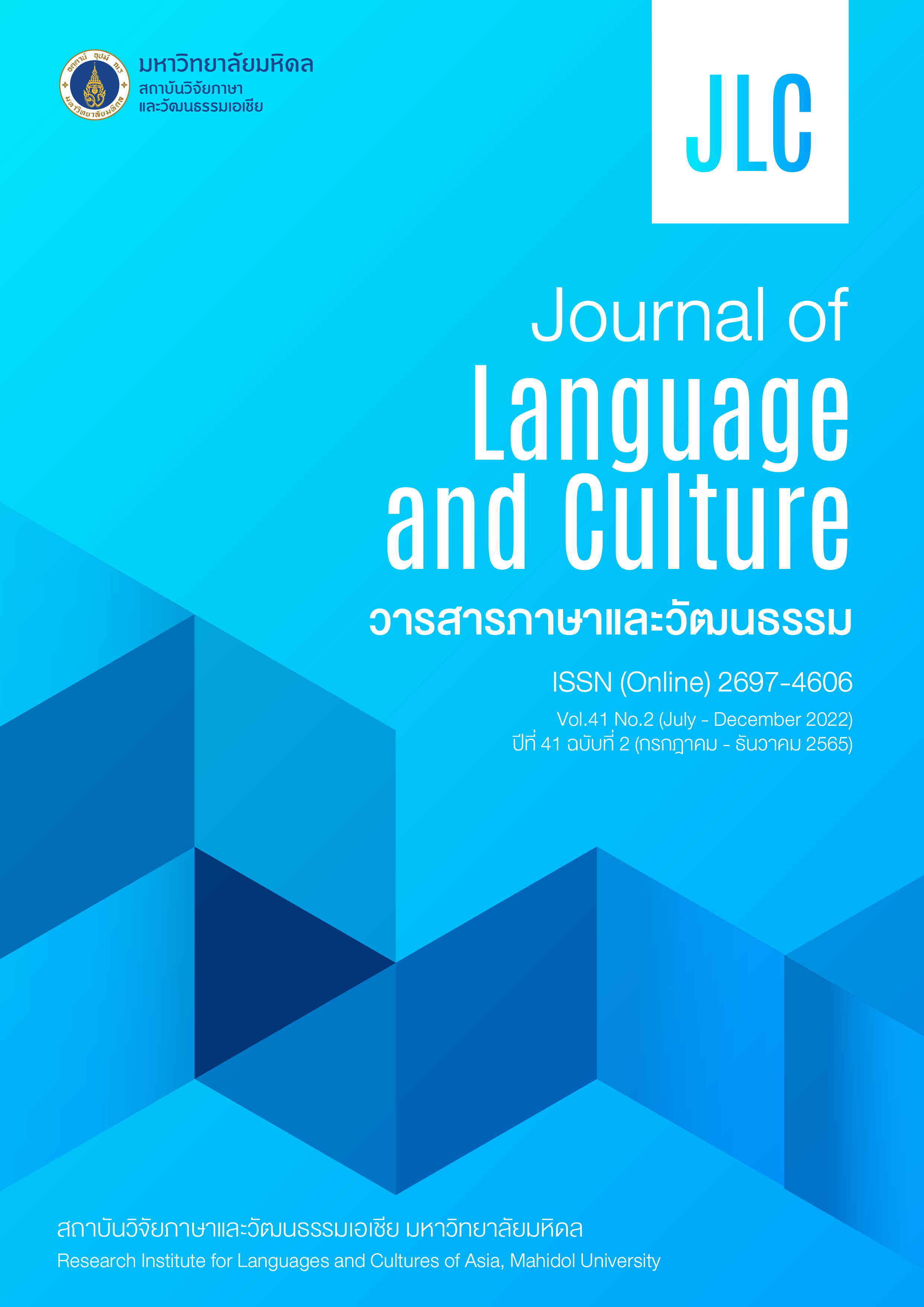Looking at the world through 'Thai-tinted' glasses: The Sino-Thai and Malay Muslim identities
Main Article Content
Abstract
Thai nationals of Chinese descent generally changed their Chinese last names into Thai while the Malay-speaking Muslim populace have not experienced language makeovers to the same extent. The Malay Muslim identity has been constructed around language issues, which, some suggest, should be addressed to combat inequalities that exacerbate inter-ethnic tensions. As a result of the promotion of a pro-monolingual language ideology to hegemonic status, Standard Thai has achieved dominance after the beginning of the twentieth century. The Chinese schools had been suppressed, resulting in the younger generation's inability to master the language of their ancestors. The Pondok, the religious schools in the southernmost provinces, were also suppressed, however, to a much lesser degree. Subsequently, the wave of languages that flow into one another do not feature Mandarin Chinese or other Chinese dialects in most ethnic Chinese families. The world is only seen through 'Thai-tinted' glasses as Thai has seeped into the production of an art form that deploys language. In their literary pursuits, Thai authors of Chinese descent speak about Chineseness within the non-Chinese nation that they can claim as their own. On the other hand, to be admitted to the Thai literary circle, Malay-speaking authors have to speak about Malayness in the Thai language even when the Malay language and Islamic culture shape their cultural identity.
Article Details
The articles featured in the Journal of Language and Culture (JLC) constitute academic works representing the viewpoints of the respective author(s). It is crucial to note that these opinions do not necessarily reflect those of the Editorial Board.
All articles published in JLC are released under the Creative Commons Attribution 4.0 International License (CC BY 4.0). This license grants permission for unrestricted use, distribution, and reproduction in any medium, provided proper credit is given to the original author(s) and the source.


